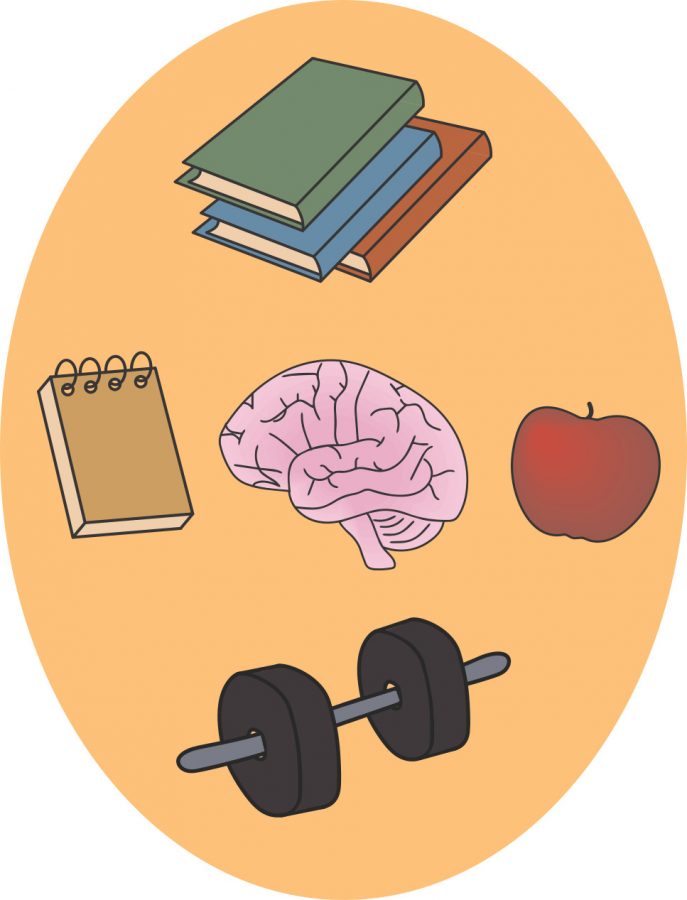In-Person School Mentality: Students Transition Back to On-Campus Learning
October 15, 2021
As students transition out of a year and a half of mostly online school, they are faced with a hefty adjustment. According to LASA wellness counselor Alicia Salinas, mental health and academics are affected by this change: switching learning formats alters social interactions, time online, transportation time, relationships with teachers.
Since the beginning of school this year, Salinas said she’s seen students both thriving and struggling during the transition from online to in-person learning. For some students, they have enjoyed the social interaction, while other students have developed social anxiety. Salinas hopes students will be able to adjust to the new environment soon.
“I think it’s a hit or miss; same way with virtual,” Salinas said. “We’ve had kids who are like, ‘Absolutely, I’m so glad to be back. This is amazing for my mental health or social isolation.’ And the way that others just love online so much, that it’s been a struggle to be back with 1,300 kids. ”
Junior Kate Starkloff had a difficult time with online school: she said that being online made it difficult for her to do work on time and muster up the discipline when she did not have that accountability from her teachers and peers that comes with being in-person. One of the factors that Starkloff likes about in-person school is higher motivation.
“I didn’t have any motivation when I was just in my room by myself,” Starkloff said. “I wasn’t really checking TEAMS for my grades, so I didn’t really have any consequences if I didn’t turn anything in.”
Sophomore George Clark, believes that procrastination is also a common theme amongst students who struggled with online school. He said the lack of visible consequences and accountability weighed down on many students last year, and that building the willpower and discipline to work without being in a physical classroom was a completely new and different skill that required a different approach to learning, time management, and managing mental health.
“I think that there’s a lot more motivation at school than there is at home,” Clark said. “[During online school] it was a lot easier just to put off my assignments for a little bit longer at home. But at school when you’re here for eight hours… I work a lot more.”
Sophomore Sofia Francis has noticed an increase in workload since transitioning back to in person school. Francis said during online school, students had additional time to do homework because they had less extracurriculars, transportation time, and time spent socializing during lunch.
“Transitioning back to a world where I don’t get home until five, I don’t have lunch to do homework, and I don’t really do homework during class because I’m trying to focus on lectures and classwork, I only have three hours to do everything,” Francis said. “I really have to rush myself or focus a lot more than I used to. And that’s just been kind of rough. It’s definitely a hard transition.”
Salinas said she has noticed some students are also noticing differences in their social interactions throughout the transition. According to Salinas, some students thrive off of socializing, having relationships with their teachers, and not staring at a screen all day, while others are feeling overwhelmed and drained by the constant socializing and constant input or distractions.
“It’ll just depend on the person,” Salinas said. “Some of us crave being around others, and some get their energy drained, like non-pandemic times. And then now you throw in we’re still in a pandemic. That can be overwhelming, too. Even if you like to socialize and you show up at a school, but you’ve only been with 10 people for the last year, that can be nerve racking and anxiety provoking for some.”
Even with the difficult transition, Salinas said she hopes students can appreciate being in-person after being online for a year and a half for the meaningful relationships and experiences that Zoom ultimately can only give so much of. Moving forward, Salinas said how she hoped students would be able to have a more connected and stronger environment for academics and mental health.
Salinas noticed that it was easy for struggling students to shut out the world during the pandemic and refuse help, as anxiety and depression heightened. Salinas said she advises students to take advantage of the resources at LASA that are available for students.
“The big thing is reach out, reach out, reach out,” Salinas said. “Sometimes we wait until we’re at a breaking point. So when you’re noticing struggles, talk to somebody whether it’s your teacher or a counselor or your parents. Don’t sit and suffer in silence.”


